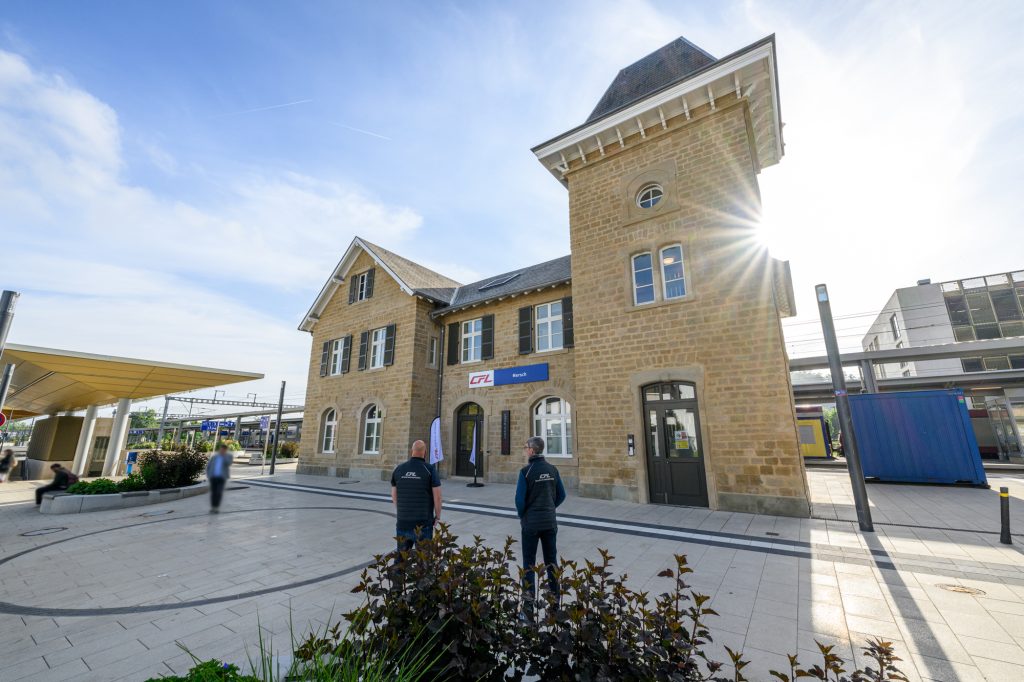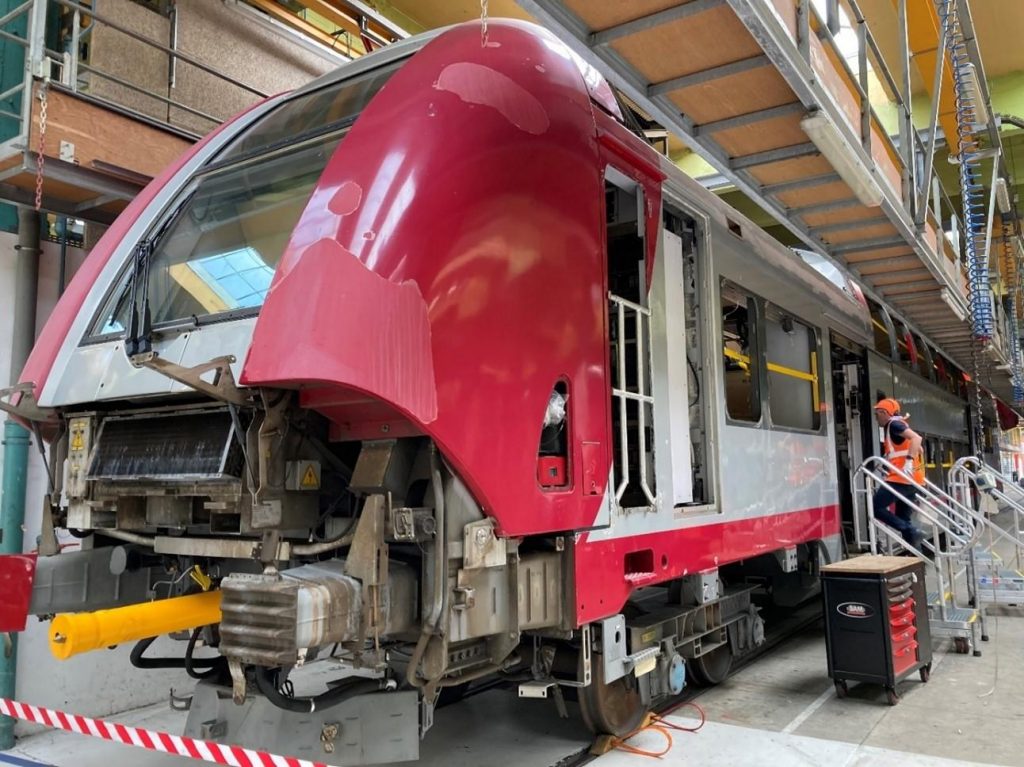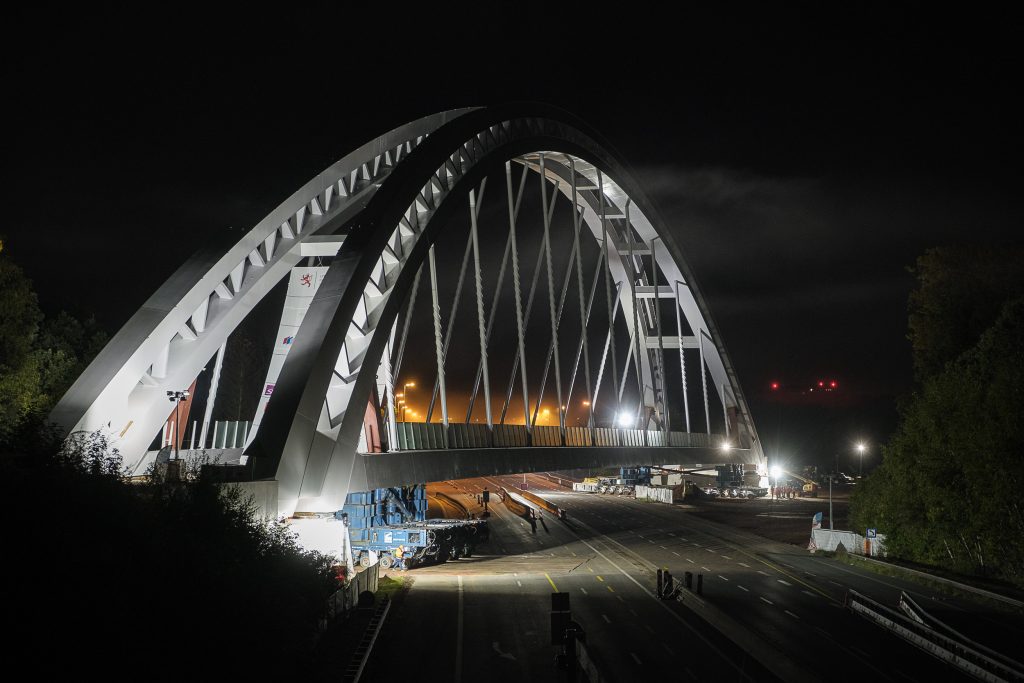
CFL and CGDIS rehearse a possible emergency
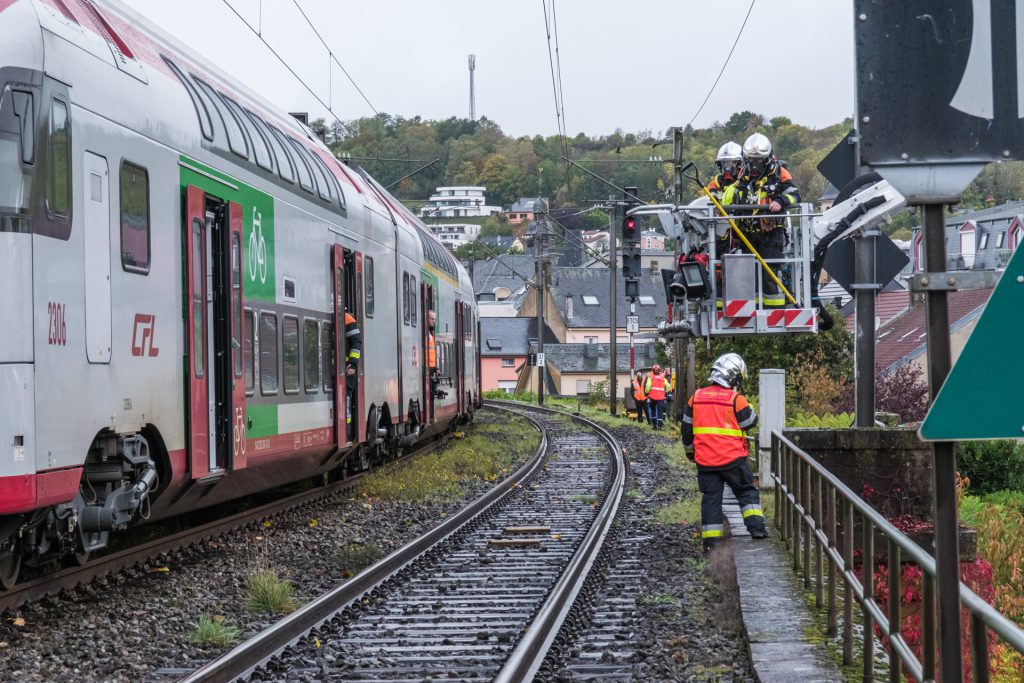
On Saturday morning, 21 October 2023, things literally got a bit hotter in Wasserbillig, or more precisely on the bridge leading to Germany in the direct vicinity. The reason behind the orchestrated activity of Luxembourg rescue services (Corps grand-ducal d’incendie et de secours (CGDIS)) and CFL personnel was an exercise to be prepared with the right reflexes in the event of a fire on board.
A fire caused by a defective power converter was simulated, as Fernand Blau, Chef de région of the central part of the rail network, explained to us. These exercises are organised by the local operations managers within the framework of the German-Luxembourg border agreement, alternating between the Luxembourg and German parts of the common border line.
“In such an event, quick action is essential so that customers and employees can be brought to safety.“
Fernand Blau, chef de région Centre
While the first clouds of smoke are already appearing inside the train, the driver is alerted to the fire via his display in the driver’s cabin. If the fire has not yet spread and the train is still technically able to move, the driver tries to get to the nearest stop to make it easier for the affected customers to get off the train.
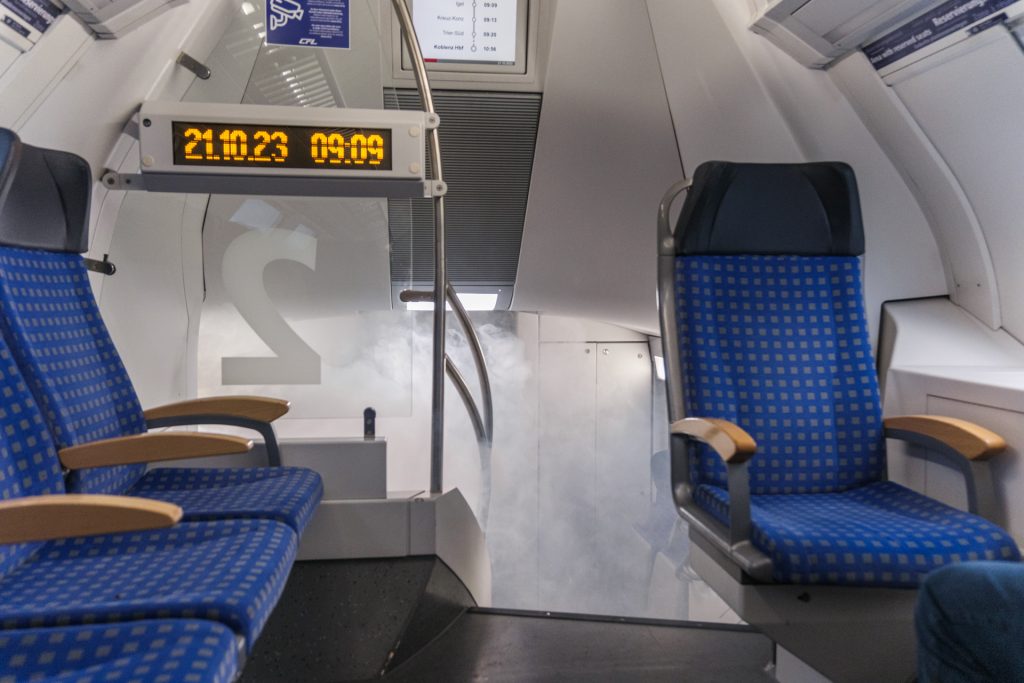
Teamwork and above all clear communication play a particularly important role in such exceptional cases.
In the exercise scenario, however, the fire in the power converter has spread so far that it is no longer possible to continue the journey due to the technical defect. The train must therefore be evacuated on the open track. A challenge for everyone involved.
Another important role is played by the train attendant. After his unsuccessful attempt to fight the fire with the on-board fire extinguisher, he informs the passengers of the imminent evacuation by voice announcement.
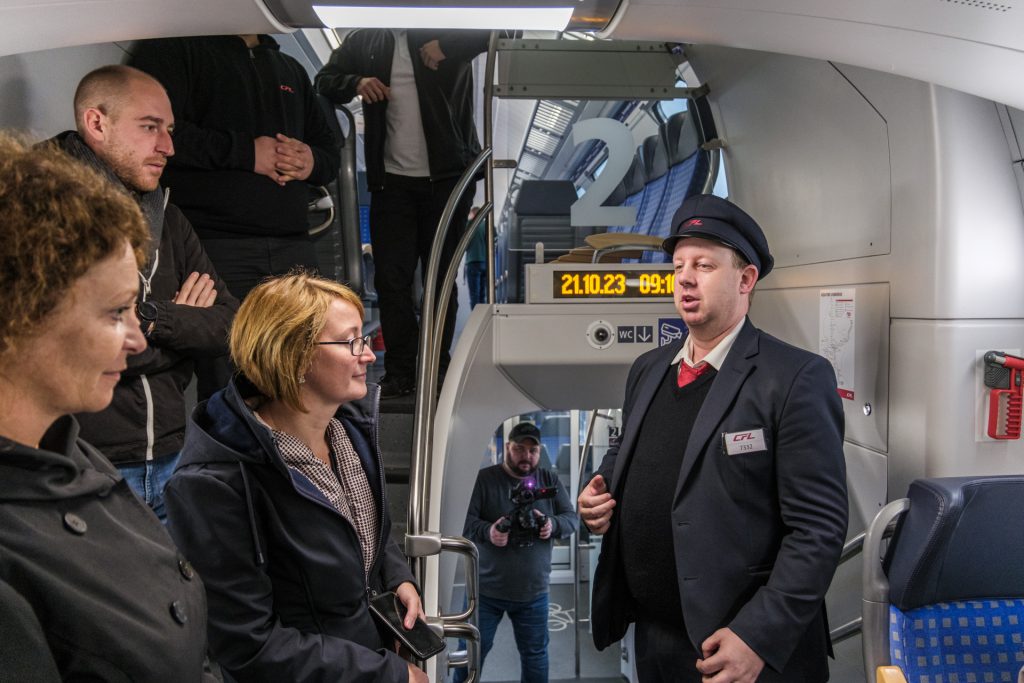
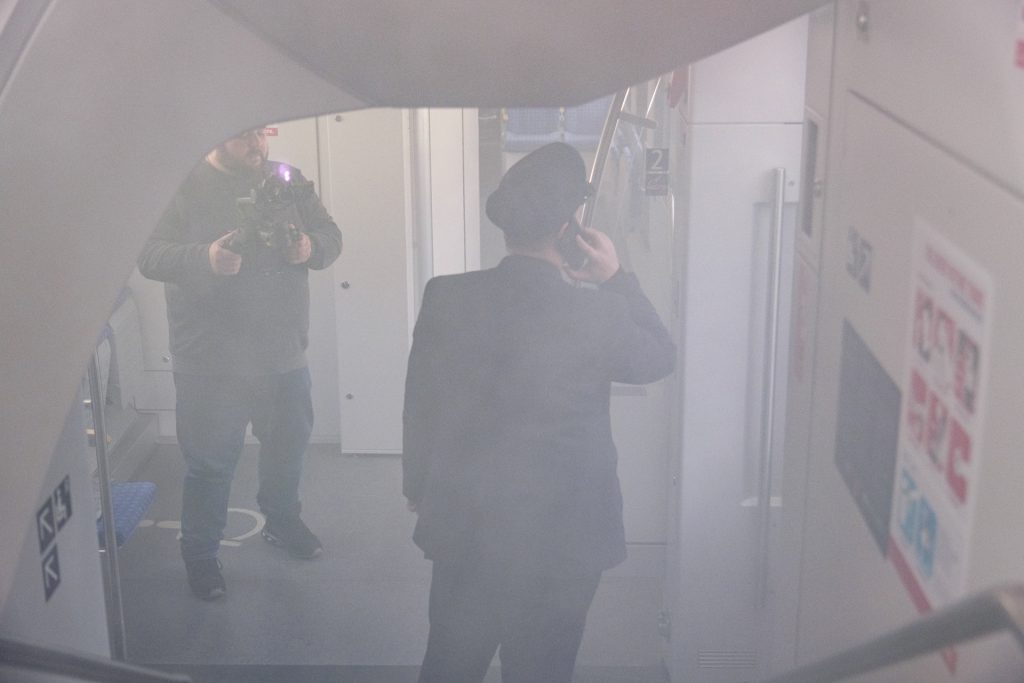
Good preparation, skill and a cool head
Despite the obvious smoke, he makes his way through the train’s compartments to ensure that all customers move outside.
Meanwhile, the train driver is in constant contact with the signal box and the rescue services on site.
The skilful and calm handling of this extraordinary situation is not a matter of course, but the result of the preceding exercises. Even though the incident is simulated and the customers on board are played by experienced men and women of the rescue forces of the CGDIS Grevenmacher-Mertert, the scenario of the day is taken more than seriously by all participants.
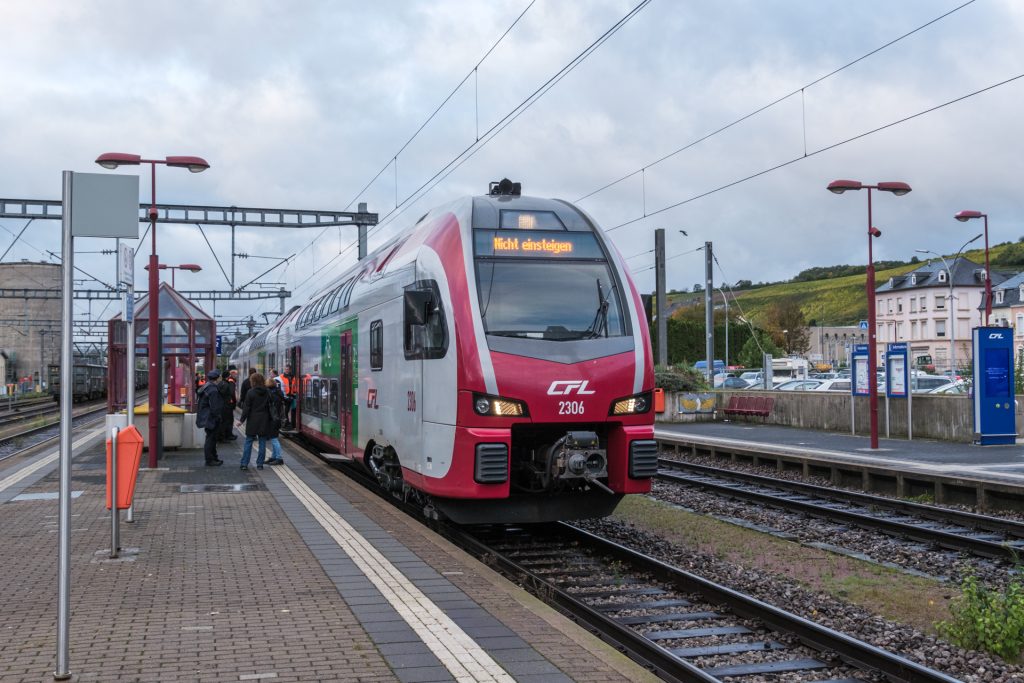
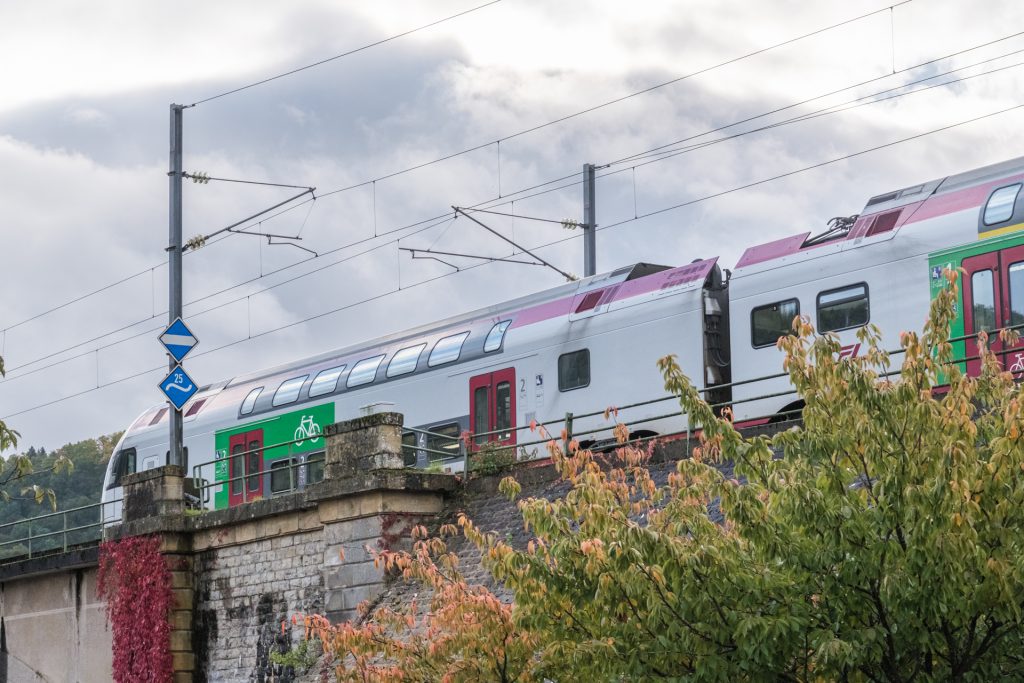
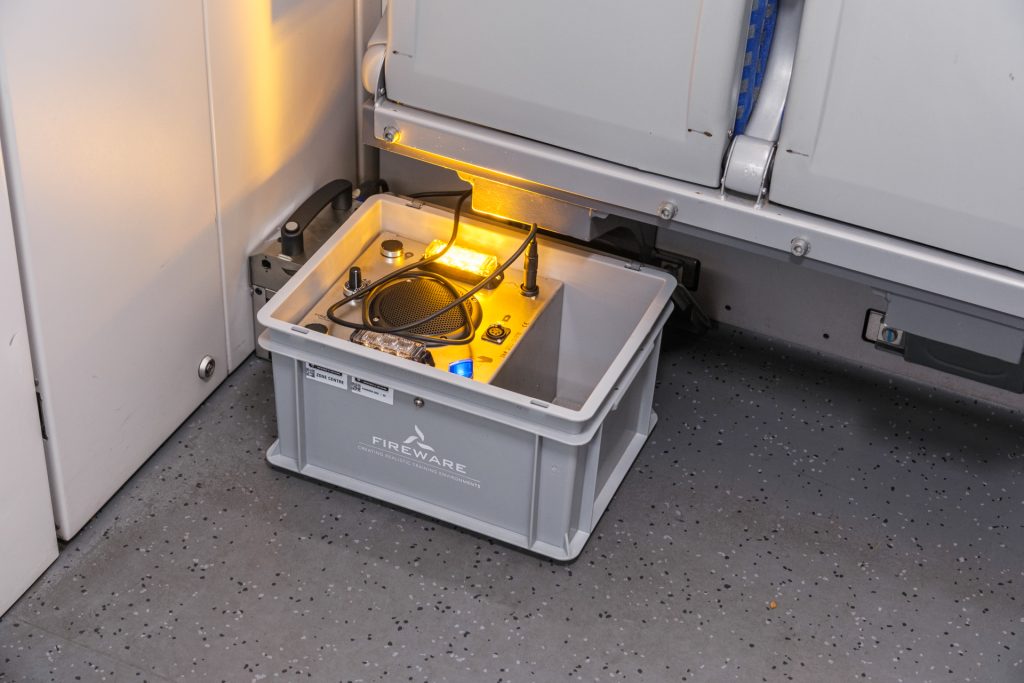
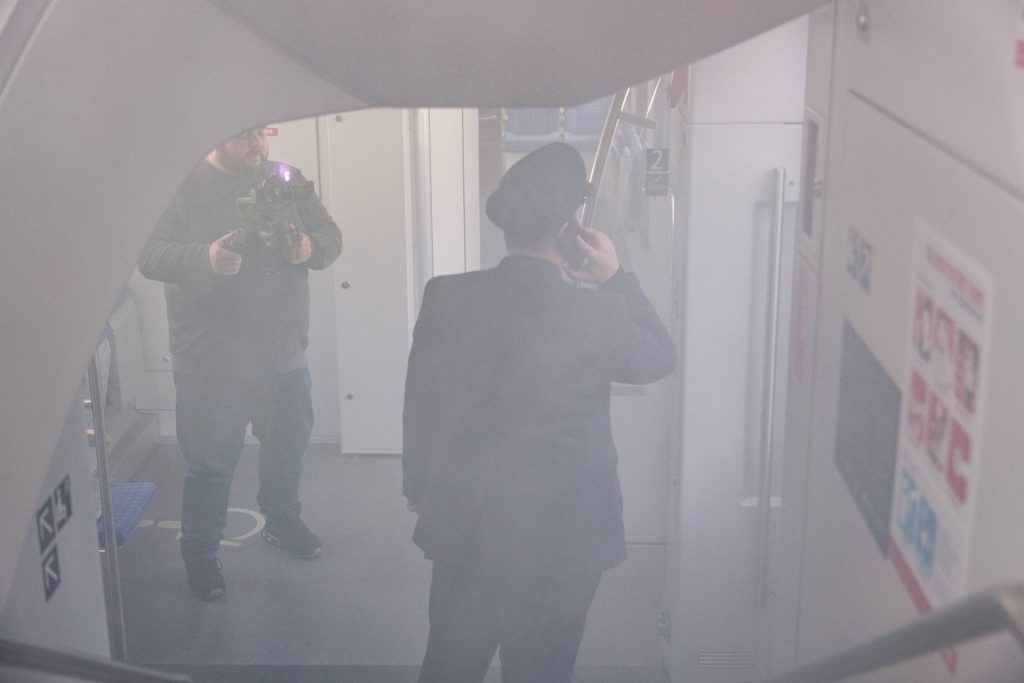
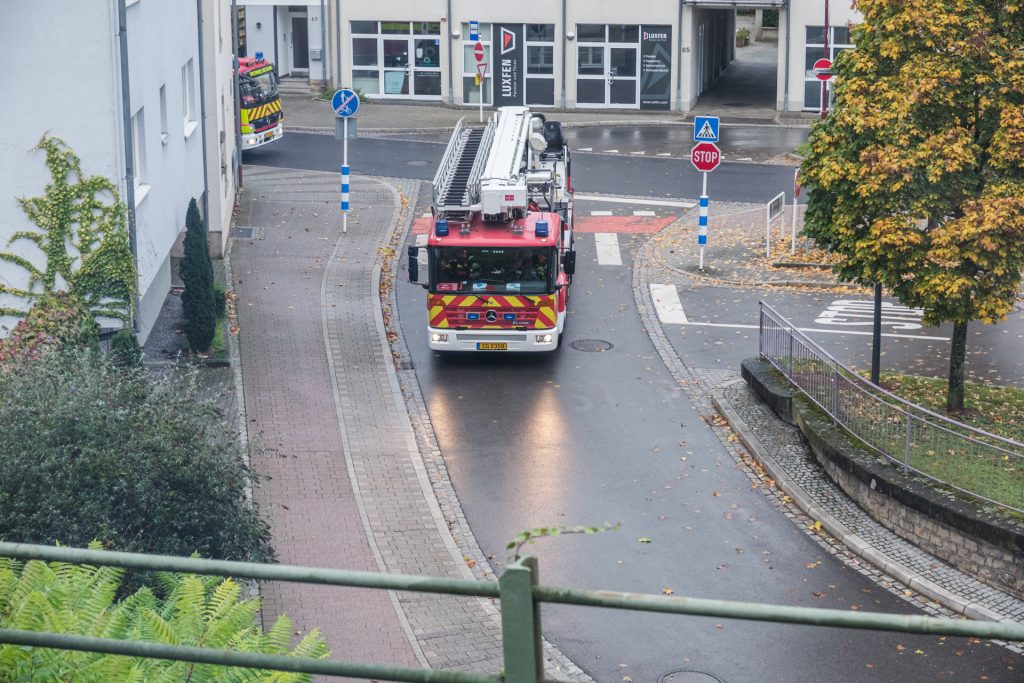
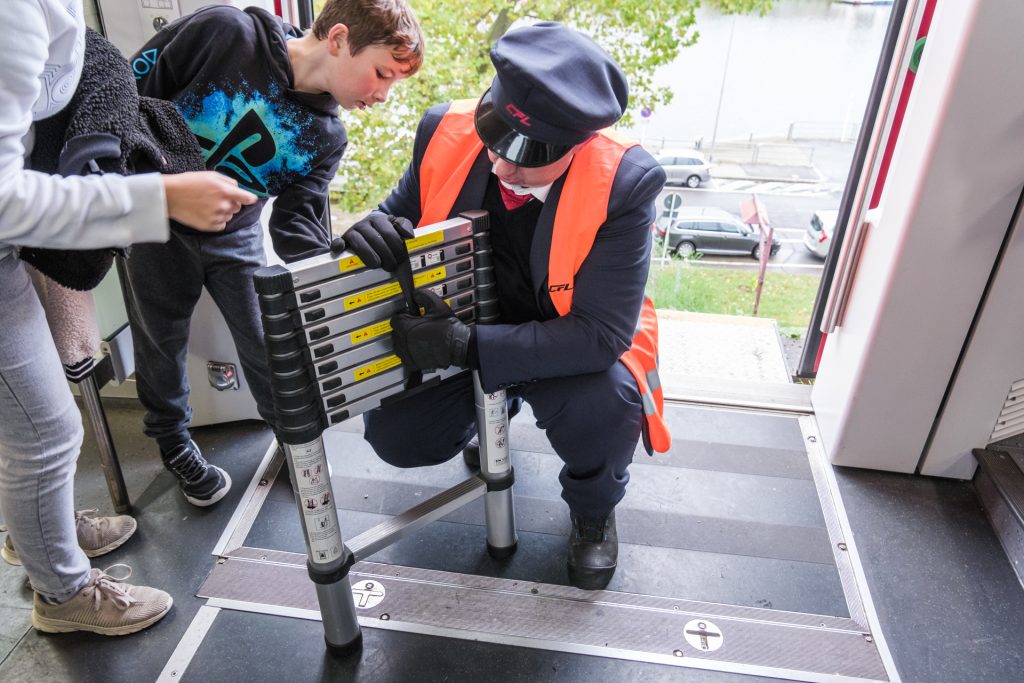
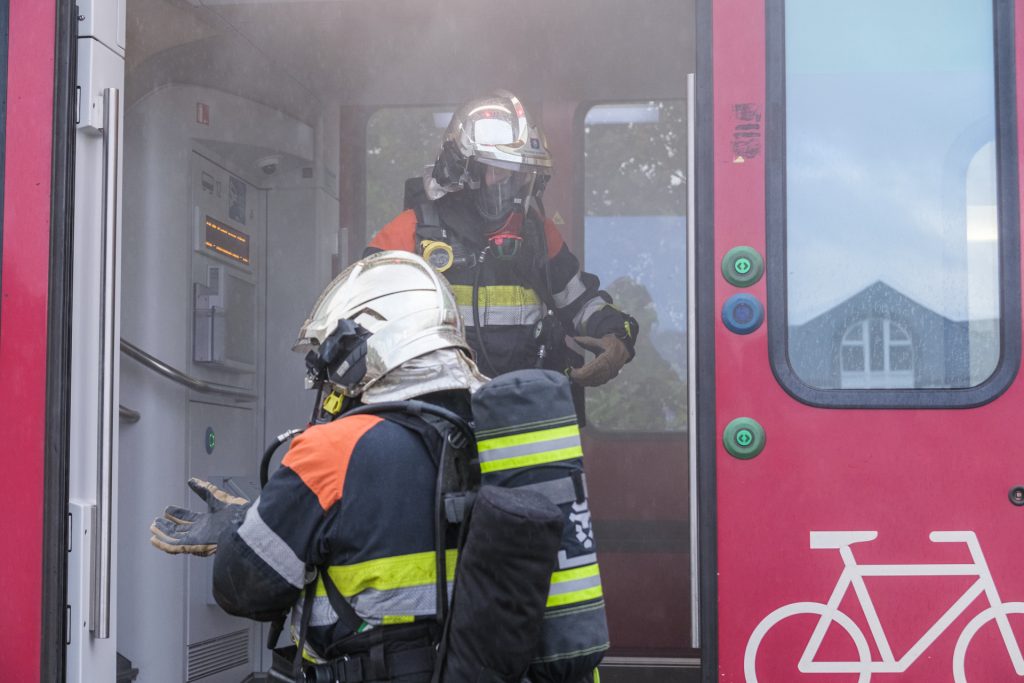
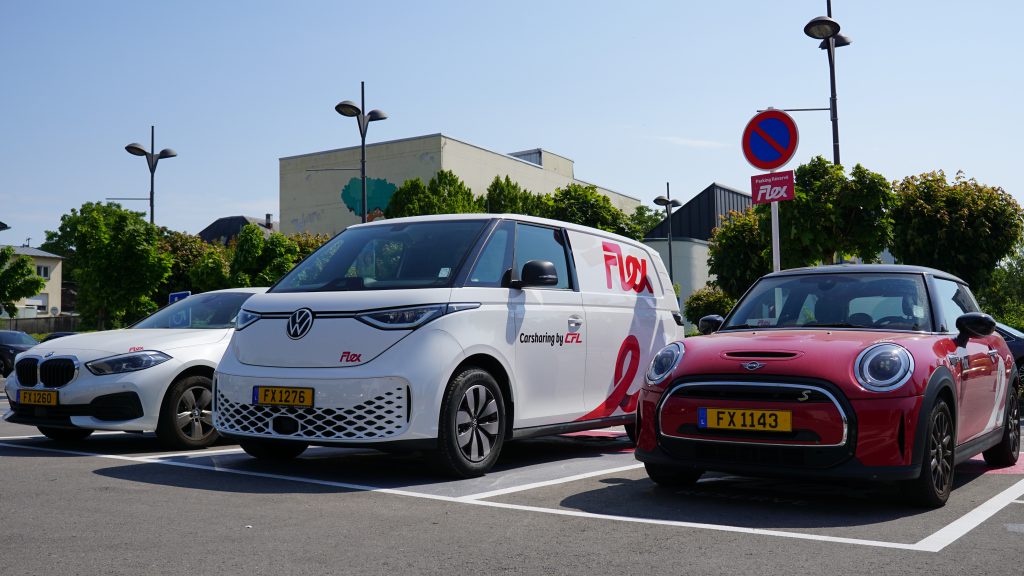
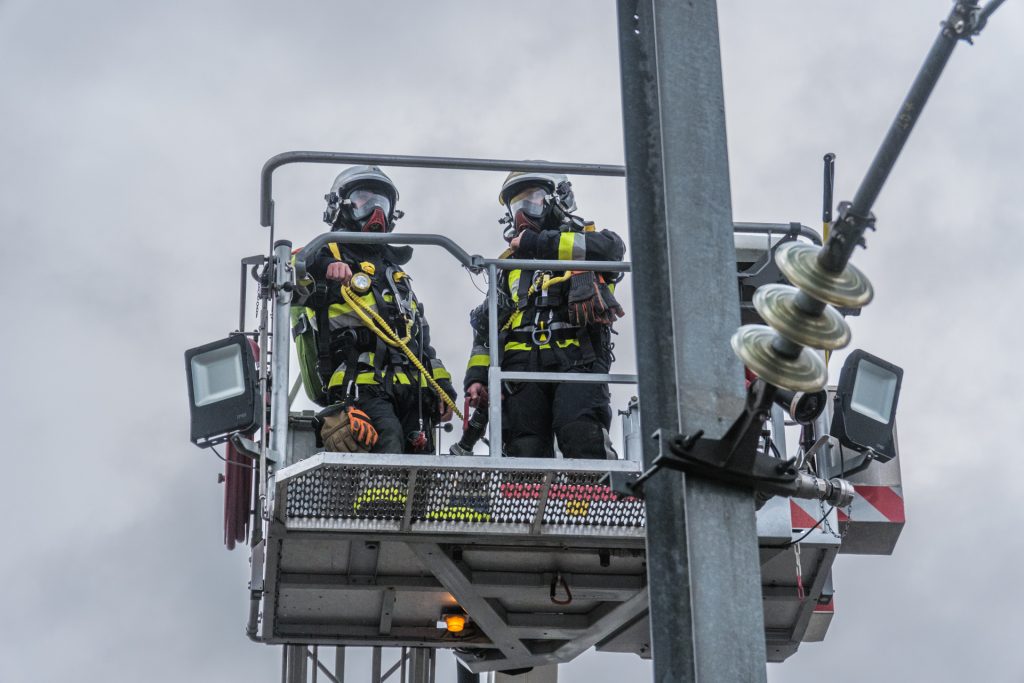
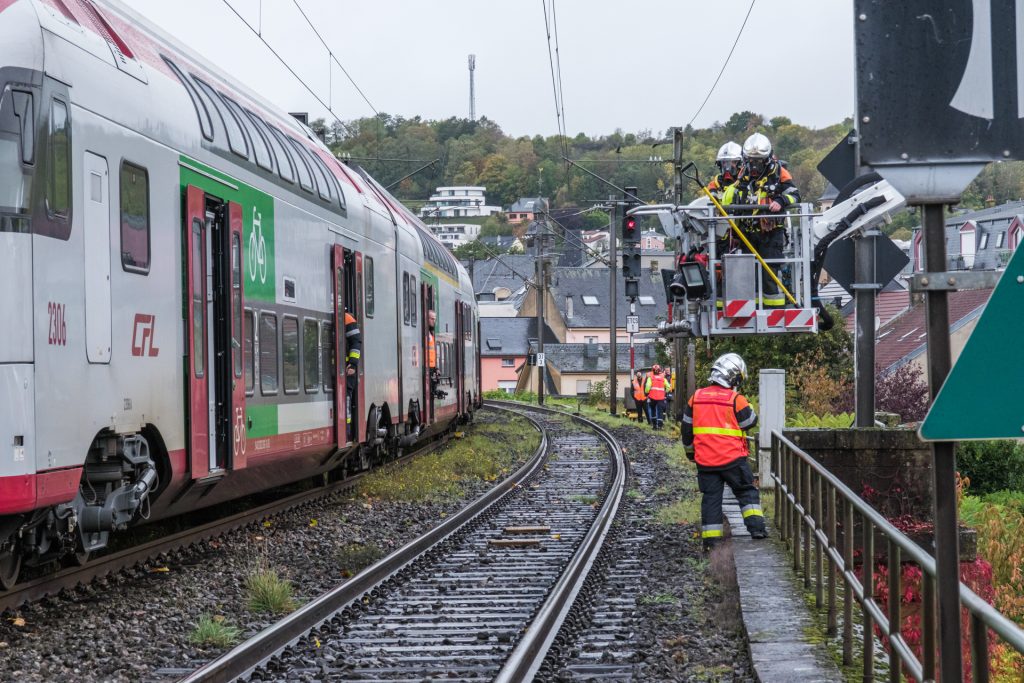
The rescue forces of the CGDIS Grevenmacher-Mertert also regularly rehearse the emergency case of operations near the tracks, as these involve special challenges, especially during fire-fighting operations.
On the one hand, there is the evacuation of passengers, which is carried out together with the train crew. “A particularly delicate moment requiring a lot of caution, is the moment when passengers have to get off the train” Eric, the CFL train attendant involved in the exercise, explains to us.
Unlike when the train is stationary on the platform, during evacuations on the open track, customers have to climb down a little more than one metre into the track.
With its 25,000 volts, the overhead line is another special feature for fire-fighting work near the tracks. In order to avoid any risk from this side, the “Central Sous-Station”, which controls the entire power supply for the Luxembourg railway network, first cuts off the power over a large area, then more locally, at the request of the signal box. Depending on the type of intervention, the rescue forces also have to wait for the earthing of the overhead line by further CFL specialists before entering the affected track area and starting the extinguishing work.
The fire brigade is also only allowed to enter the track after consultation with the CIL (Chef d’Intervention Local) or the CFL emergency manager on site. The reason for this is that the opposite track must also be secured to prevent trains on the opposite track from endangering the emergency services, CFL staff and customers. For this safety, the signal box operators on the German and Luxembourg sides are in close contact.
Asked to summarize his experience with the simulation, Fernand Blau states : “It surely was a good performance that was only possible thanks to the courageous cooperation of all those involved. More than 50 men and women were involved in this exercise, which went off entirely to our satisfaction.” Fernand Blau’s special thanks go to his colleagues from the CFL, as well as those from the CGDIS of Grevenmacher-Mertert and the staff of DB-Netz.
